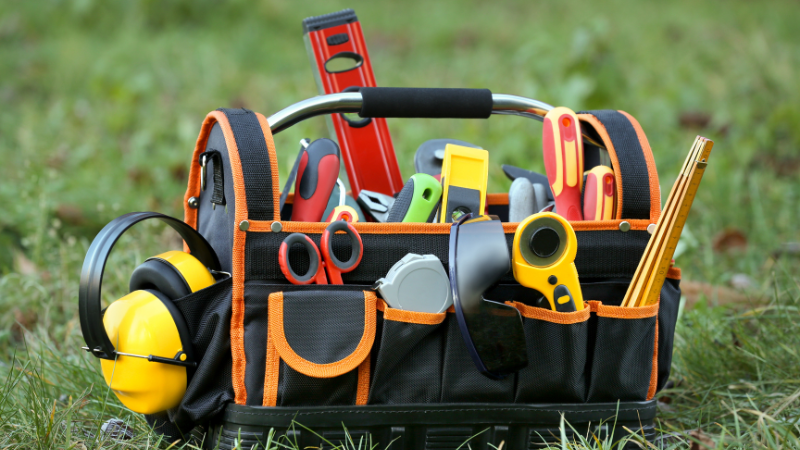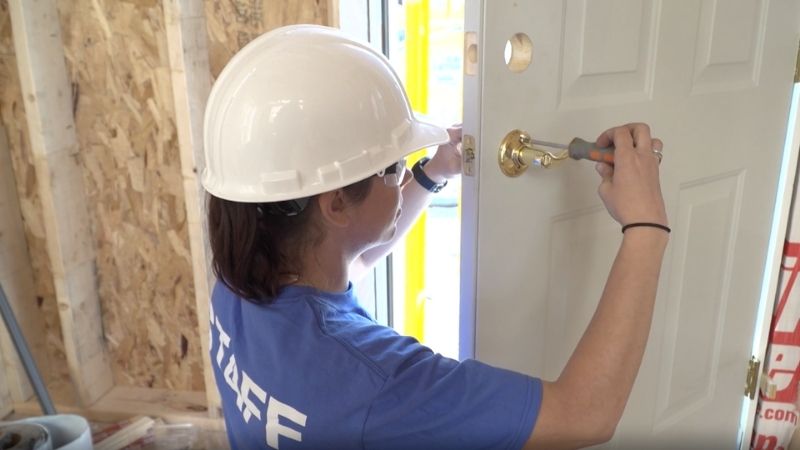Weekend Home Improvement Projects: 9 Summer Upgrades to Tackle On Your Own
After any Minnesota winter, it's easy to get excited about summer do-it-yourself projects. And with our seasons, we don't have all that long before...

Being a first-time homebuyer can be the most exciting time of your life - and it can also be incredibly overwhelming. You've saved the money, secured a mortgage, found a home you love, and finally closed on it. But once the last document is signed and the keys are turned over, this beautiful home becomes your responsibility.
Even if you're a member of a Homeowners Association, you're bound to have some maintenance and repair projects pop up in your first few years of owning your home. Never fear! We've assembled a list of must-haves and nice-to-haves for your essential home maintenance toolkit. By having these items on hand, you can rest easy knowing you're prepared to tackle any unexpected breaks, cracks, and repairs that come up.

We divided the home maintenance toolkit into two types: your basic "must-have" items, and an expanded kit that includes "nice-to-haves" for more involved home repair projects.
| The Basic Kit | The Expanded Kit |
|
|
If you're not a part of a Homeowner's Association, you'll also likely be responsible for the exterior care of your home. You'll need a few things to make sure you keep your home and yard maintained year-round:
Perhaps the best tool to have in your arsenal is your smartphone. You can search for DIY instructions for almost any home repair or maintenance project. You can find how-to videos that walk you through the supplies you'll need and how to execute. Just make sure that you watch instructional videos in their entirety, and use your best judgement. If a task seems too complex or dangerous, ere on the side of caution.
Check out ReStore's DIY Headquarters for videos, blogs, remodel guides, and more!
In addition to having the right tools in your kit, it might put your mind at ease to have an idea of some of the most common repair projects you might need to perform. Minor plumbing (think leaky faucets or fixtures) and spackling are pretty typical repairs that are needed in the first few years of homeownership. That's because these areas take a lot of wear and tear and if your home is newer, it may "settle" into the foundation over time.
If after watching a few do-it-yourself videos or consulting with friends and family, you still feel uncomfortable performing the repair, you should trust your gut and call a professional. When calling on subcontractors, beware of scammers. A good process to follow when looking for a professional service provider is to ask for referrals. Inquire with neighbors and friends, coworkers, or consult sites that vet and rate service providers, like Angie’s list or HomeAdvisor. It's also always a good idea to research the company's record with the Better Business Bureau.
Have a checklist for maintenance handy and post it in your garage and utility room. (You can use Twin Cities Habitat's maintenance checklist.) We also recommend setting reminder tasks in your phone to keep you on track throughout the year. Some good maintenance reminders to include are:
 For plumbing projects, make sure you know where to shut your water flow off and on, and always turn water off before you start any sort of repair.
For plumbing projects, make sure you know where to shut your water flow off and on, and always turn water off before you start any sort of repair.
You can also learn some basic and advanced project and repair skills at local workshops. Community colleges will offer public training sessions from time-to-time, and local hardware stores often offer workshops on smaller fix-it projects on weekends. These classes can be immensely helpful and help build your confidence in making other repairs.
One of the best things to keep in mind as a new homeowner is that you have to try; that's the only way you'll learn how to fix things that come up. And if you don't get it quite right, that's okay - there's always someone who can help. Stop by either of our ReStore locations to pick up some of your basic tools and materials for your first project. And our staff are happy to answer any DIY questions and help get you started.
Your gift unlocks bright futures! Donate now to create, preserve, and promote affordable homeownership in the Twin Cities.

After any Minnesota winter, it's easy to get excited about summer do-it-yourself projects. And with our seasons, we don't have all that long before...

Who says you need heavy equipment and thousands of dollars to make home improvements? If you’re new to do-it-yourself (DIY) projects, you might be...

Finding the right furniture for your new home can feel like solving a puzzle. You want pieces that look good, will last through family life, and...